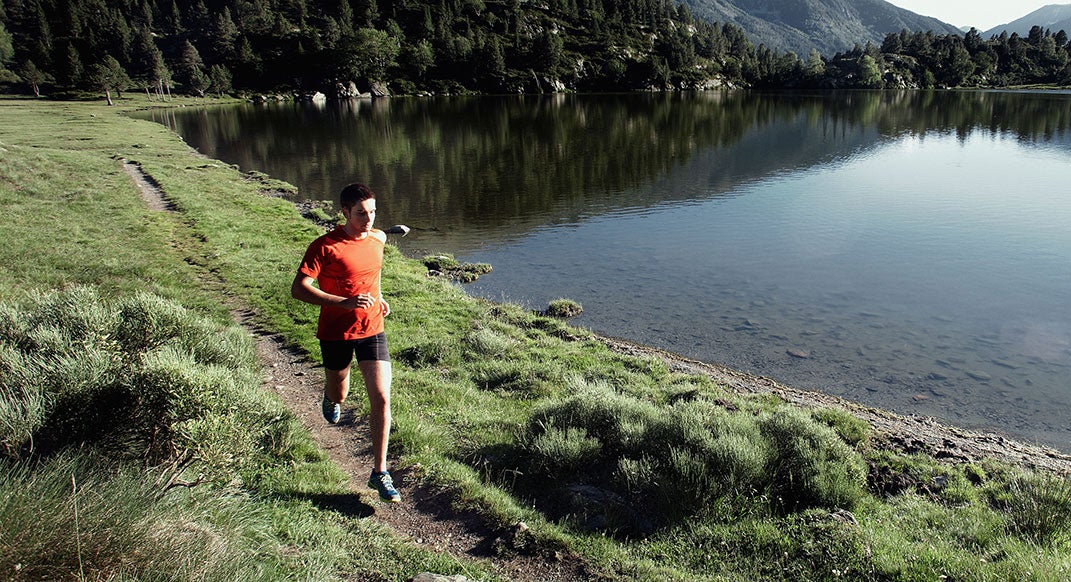4 Tips for Ramping Up Early-Season Mileage

It’s training season again.
As the country emerges from the grips of winter, runners emerge on the trails with an eye toward spring, summer and fall goal races.
Ramping up your training is an exciting time. But increasing your mileage and intensity is also a time fraught with risk, particularly if you took an off-season to cross-train or rest during the winter, leaving your body unaccustomed to the pounding of running. Hip and lower-leg soreness abound and, if you’re not careful, can derail well-laid training plans before they even get off the ground.
For some basic tips about safely reintroducing your body to peak training form, we talked to Trail Runner contributing editor David Roche, the winner of the recent Way Too Cool 50K and a coach who works with athletes from pros to beginners at Some Work, All Play.
1. Start Slow and Increase Gradually
Like, really slow. Roche suggests running only 40 to 60 percent of your last season’s peak mileage when you start running again, and spreading that mileage out over shorter, more frequent runs.
“After each week, evaluate how you feel, paying special attention to your Achilles, knees and hips,” he says. “If you have anything that could be an injury in that area, back off a bit.”
If you feel like you are absorbing your training without injury, he says, you can start to increase your mileage, but by no more than 10 percent per week.
2. Prep Your Body for Hard Efforts
Depending on your goal race, you may be incorporating speed work into your training down the road. But first—while you are still building your base—Roche says you can prep your body for the increased effort and injury risk that will later come with added intensity.
“After a week or two, add light strides—20-second accelerations focused on smooth, comfortable speed with full recovery—at the end of one to three runs per week to prepare your musculoskeletal training for harder efforts to come,” he says.
Running over rolling, hilly terrain during base building helps build strength that will pay dividends later in your training and racing, with less injury risk than intense intervals or tempo runs. As Roche puts it, “Hills provide a good workout in disguise and prepare your cardiovascular system for the fun on the way.”
Again, Roche emphasizes, evaluate your status after each week. And it is important to first build up to your peak training mileage, and only then to add speedwork; simultaneously upping your volume and intensity is asking for injury.
“When you reach your goal mileage for the early season, you can start adding more structured workouts and interval training,” he says.
3. Work on Strength and Mobility
Roche advocates drills for strength and mobility year-round, but says they are especially important early in the season.
“Most likely, you’ll have developed imbalances from the hard training in previous seasons and the down time from running, which makes it difficult to know how your body will respond” when you start running again, he says. “In the face of that uncertainty, it’s essential to focus on two main areas: hips/butt and calves/feet.”
Roche recommends performing lunges to the front, side and rear, as well as leg swings and calf stretching before each run. “[Include] a few eccentric calf drops,” he says. “After each run, focus on hip stabilization, including some leg swings and lots of Jane Fonda-esque exercises”—side-lying leg raises that strengthen your glutes.
Roche notes many elite runners prefer a set of exercises prescribed by Coach Jay Johnson called the Myrtl Routine. You can see Roche’s more specific prescriptions for pre- and post-run drills here.
And Roche has one other injury-prevention trick up his sleeve: “Be sure to vigorously foam roll every single day, without fail,” he says. “Inadequate foam rolling is the starting point for countless sour IT bands and rancid knees.” (Here’s more on how to use foam rollers and other forms of self-massage without exacerbating injuries.)
4. Respect Your Calves and Achilles
This is such a common problem that it merits a second or third mention. “So many runners have issues in the lower legs immediately upon starting back up,” Roche says. “In addition to vigorous foam rolling and self-massage, add a few minutes of barefoot running to your early-season routine to jump-start the strengthening process.”